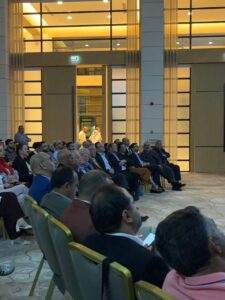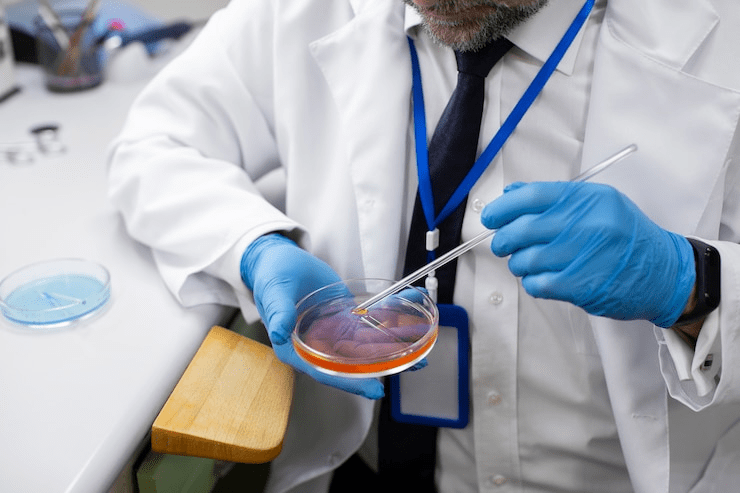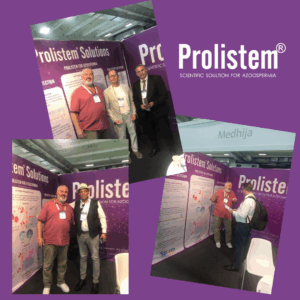
Male Infertility Symposium – Landmark Hotel, Amman
The Jordanian Society for Fertility and Genetics recently

Infertility is a challenging issue for many couples and male infertility accounts for nearly 40–50% of all infertility cases. One of the most severe forms of male infertility is azoospermia, a condition where a man’s semen contains no sperm. While this can sound devastating, the good news is that azoospermia is treatable, and many men in the United States have successfully fathered children after diagnosis and treatment.
If you’re researching azoospermia treatment in the United States, you’re in the right place. This detailed guide will cover everything you need to know—types, causes, diagnosis, treatment options, costs, and success stories.
Azoospermia is a medical condition in which there is no measurable sperm in a man’s ejaculate. It affects about 1% of the male population and approximately 10–15% of infertile men.
There are two main types of azoospermia:
This occurs when sperm is produced normally in the testicles but blocked from being ejaculated due to an obstruction in the reproductive tract. Common causes include:
Congenital absence of vas deferens
Vasectomy
Infections or inflammation
Trauma or surgical complications
This type is caused by impaired or absent sperm production in the testicles. It can be due to:
Hormonal imbalances
Genetic conditions like Klinefelter syndrome
Testicular failure
Varicocele
Environmental or lifestyle factors
Understanding the type of azoospermia is crucial for selecting the right treatment.
In the United States, fertility specialists follow a standard diagnostic protocol to confirm azoospermia and its root cause.
The first step is a semen analysis done at least twice. The sample is centrifuged and examined under a microscope to check for sperm presence.
A urologist or andrologist examines the testicles, scrotum, and vas deferens for abnormalities.
Blood tests assess levels of:
FSH (Follicle Stimulating Hormone)
LH (Luteinizing Hormone)
Testosterone
Prolactin
Elevated FSH often points to non-obstructive azoospermia.
Chromosomal and Y-chromosome microdeletion tests can identify genetic causes.
Helps detect issues like varicocele or abnormalities in the epididymis or vas deferens.
A minor surgical procedure that examines sperm production in the testes, is especially useful for NOA cases.
The United States is a global leader in reproductive medicine, offering advanced and effective azoospermia treatments. Here’s a breakdown of the most common and effective options available today.
If azoospermia is caused by an obstruction, surgical procedures can restore fertility:
Used to reverse vasectomy or fix blockages.
Success rates can be as high as 70%–90% depending on the surgeon’s skill.
Performed microsurgically to improve sperm production in NOA cases caused by varicocele.
Can restore sperm to the ejaculate in 30–50% of cases.
For men with hormonal imbalances:
Clomiphene citrate
hCG injections
GnRH therapy
Aromatase inhibitors
These medications stimulate natural sperm production and are especially effective for secondary hypogonadism.
TESE is a procedure where sperm is retrieved directly from the testicle. It’s often used for men with NOA.
Conventional TESE: Involves random biopsies.
Micro-TESE: Uses a microscope to locate sperm-producing tubules, increasing the chances of success and reducing damage.
Micro-TESE is widely available across major azoospermia treatment centers in the United States and is highly recommended for NOA.
Once sperm is retrieved, even in minimal quantities, ART techniques can help achieve pregnancy.
Eggs and sperm are combined in a lab.
A single sperm is injected into an egg.
Especially effective when sperm count is extremely low or surgically retrieved.
Here are some of the top-rated fertility clinics offering advanced azoospermia treatments in the U.S.:
Renowned for micro-TESE and hormonal therapies.
Personalized care and high success rates.
Dr. Peter Schlegel, a leader in micro-TESE.
Known for treating complex NOA cases.
Offers robotic surgery for obstructive azoospermia.
Advanced genetic testing facilities.
Known for high IVF and ICSI success rates.
Offers virtual consultations and financial plans.
Specialists in male infertility.
Offers comprehensive azoospermia evaluations.
The cost of azoospermia treatment in the United States varies widely depending on the type of treatment, clinic, and insurance coverage.
| Treatment | Estimated Cost (USD) |
|---|---|
| Semen analysis & diagnosis | $300 – $1,000 |
| Hormonal therapy | $100 – $500/month |
| Surgical sperm retrieval (TESE) | $3,000 – $10,000 |
| Vasovasostomy / Vasoepididymostomy | $5,000 – $15,000 |
| IVF with ICSI | $12,000 – $25,000 per cycle |
| Genetic testing | $500 – $2,000 |
💡 Tip: Some clinics offer financing plans, and certain procedures may be covered partially under health insurance if deemed medically necessary.
Surgical correction often leads to natural pregnancy.
IVF-ICSI with sperm retrieval has a success rate of 60%–75% per cycle.
Micro-TESE successfully retrieves sperm in 40–60% of men.
IVF-ICSI success depends on egg quality, but many couples go on to have healthy babies.
Success rates are highly dependent on:
Patient’s age and overall health
Female partner’s fertility
Clinic expertise and lab quality
Azoospermia can be emotionally overwhelming. Couples often go through:
Grief
Frustration
Anxiety about treatment outcomes
That’s why many azoospermia treatment centers in the United States offer:
Counseling
Fertility support groups
Mind-body programs to manage stress
Even with medical treatment, you can enhance your fertility journey through lifestyle changes:
Maintain a healthy weight
Exercise moderately
Quit smoking and alcohol
Reduce exposure to heat (saunas, laptops on lap)
Eat antioxidant-rich foods (zinc, selenium, vitamin C & E)
These steps can improve sperm quality and overall health.
Some cases caused by hormonal imbalances or lifestyle factors may improve naturally with diet, exercise, and medications. However, most cases require medical intervention.
No. Thanks to techniques like micro-TESE and ICSI, many men with azoospermia can still use their sperm for conception.
Not always. Treatment depends on the cause. Obstructive azoospermia often has very high treatment success rates, and some NOA patients regain sperm production after hormone therapy or varicocele repair.
If you’re struggling with male infertility and searching for azoospermia treatment in the United States, know that you’re not alone—and you have options. From accurate diagnosis to advanced procedures like micro-TESE and IVF-ICSI, American fertility clinics are well-equipped to guide you on your journey to parenthood.
Don’t hesitate to seek help from a certified reproductive urologist or fertility center. Early diagnosis and a customized treatment plan can make all the difference.
Remember: Azoospermia is not the end of your fertility journey. It’s just the beginning of a path filled with possibilities.

The Jordanian Society for Fertility and Genetics recently

Prolistem for non obstructive azoospermia, Non-obstructive azoospermia (NOA)

Introduction Male infertility, especially caused by azoospermia, affects

We are proud to have participated in the